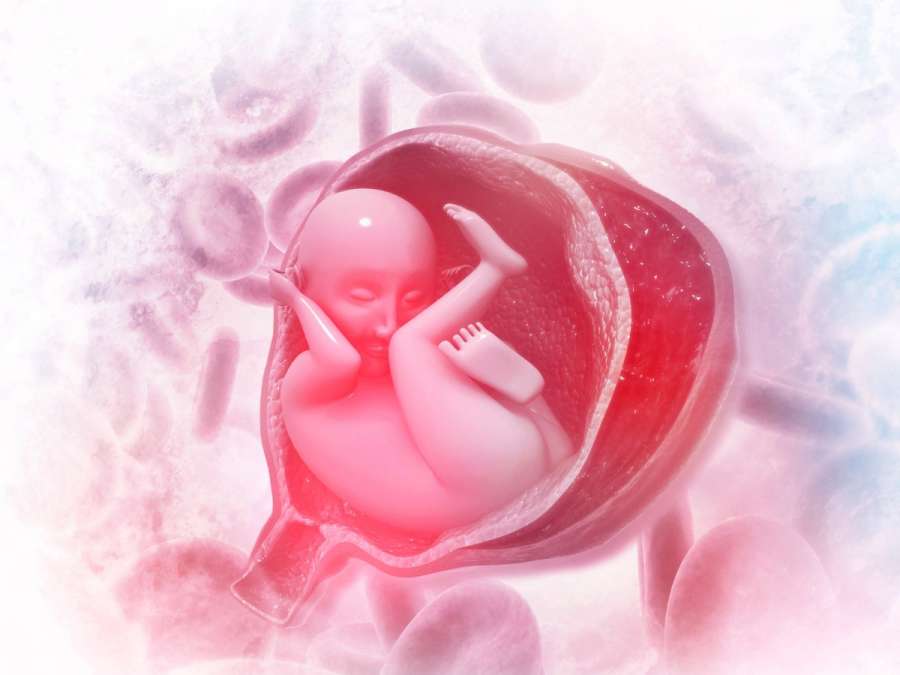The term “nuchal cord” refers to a condition where the umbilical cord wraps around the fetus’s neck during pregnancy. This article looks into the complexities of nuchal cord i.e., umbilical cord complications occurrences, exploring causes, potential effects, diagnosis, and management strategies.
Pregnancy is a time of anticipation and preparation, but it can also bring unforeseen challenges, including complications involving the umbilical cord. One such complication is a nuchal cord, where the umbilical cord becomes wrapped around the baby’s neck during pregnancy or labor. While this condition is relatively common, it can raise concerns and require careful monitoring and management. Understanding nuchal cord complications is essential for expectant parents and doctors alike. In this guide, we will navigate the complexities of nuchal cord incidents. We will also explore their causes, implications, and the medical approaches available to ensure the safety of both the mother and the baby throughout this phase.
1. Understanding Nuchal Cord: Causes and Incidence
a. Defining Nuchal Cord
A nuchal cord occurs when the umbilical cord wraps around the baby’s neck one or multiple times. Prenatal ultrasound examinations or delivery observations can reveal this relatively common condition, which presents with varying degrees of tightness.
b. Causes of Nuchal Cord

Nuchal cords often result from the baby’s movements in the womb. Factors like excessive amniotic fluid, long umbilical cords, and the baby’s tendency to move frequently contribute to the likelihood of a nuchal cord occurrence.
2. Umbilical Cord Complications: Effects on Fetal Health
a. Potential Complications
While nuchal cords are common, they do not always pose a threat to fetal health. However, in some cases, a nuchal cord may lead to complications such as restricted blood flow. It can also lead to reduced oxygen supply, or changes in heart rate, potentially affecting the baby’s well-being.
b. Degrees of Tightness

The impact of a nuchal cord depends on its tightness. Loosely wrapped cords might have minimal effect, while tightly constricted cords can impede blood and oxygen flow. This will necessitate careful monitoring and, in severe cases, quick medical intervention.
3. Diagnosis and Detection During Pregnancy
a. Ultrasound Imaging
Nuchal cords are often detected during routine ultrasound examinations. Advanced ultrasound technology allows doctors to visualize the position of the umbilical cord and assess whether it is wrapped around the baby’s neck.
b. Antenatal Monitoring

In addition to ultrasound, doctors may use other antenatal monitoring techniques, such as Doppler ultrasound or electronic fetal heart rate monitoring. This will evaluate fetal well-being and detect any signs of distress related to a nuchal cord.
4. Management Strategies: Umbilical Cord Complications
a. Intrapartum Monitoring
Continuous monitoring of the baby’s heart rate is crucial during labor when healthcare providers suspect or confirm a nuchal cord. This enables doctors to quickly identify any signs of distress and take appropriate action, such as adjusting the mother’s position or considering an emergency cesarean section.
b. Immediate Postpartum Assessment

After delivery, doctors carefully assess the baby for any signs of distress or complications related to the nuchal cord. Quick intervention, if necessary, ensures that any issues are addressed quickly to support the baby’s transition to postnatal life.
5. Natural Birth and Nuchal Cord Considerations
a. Vaginal Birth with a Nuchal Cord
In many cases, a vaginal birth is possible even when a nuchal cord is present. Doctors assess the specific circumstances, such as the tightness of the cord and the baby’s overall well-being, to determine the safest mode of delivery.
b. Emergency Cesarean Section

In certain situations, an emergency cesarean section may be recommended. This is in case a tight nuchal cord compromises the baby’s oxygen supply or if there are signs of distress during labor. This quick intervention aims to ensure the safety of both the mother and the baby.
6. Preventive Measures and Risk Reduction
a. Regular Prenatal Check-ups
Regular prenatal check-ups, including ultrasound examinations and other monitoring techniques, play an important role in detecting and assessing the presence of a nuchal cord. Early identification allows doctors to formulate appropriate management plans.
b. Fetal Positioning Techniques

Some studies suggest that certain maternal positions during pregnancy might influence fetal positioning, potentially reducing the likelihood of a nuchal cord. Techniques such as knee-chest exercises or optimal maternal posture may be recommended in specific cases.
7. Umbilical Cord Complications: Postnatal Care and Monitoring
a. Neonatal Assessment
After birth, neonatal assessments are crucial to ensuring the baby is healthy and not experiencing any adverse effects from the nuchal cord. Doctors carefully examine the baby’s vital signs, behaviour, and overall condition.
b. Monitoring Developmental Milestones

Long-term monitoring is essential to assess the baby’s developmental milestones and overall health. While many babies born with a nuchal cord experience no lasting effects, ongoing evaluation helps identify and address any potential concerns early in the child’s life.
8. Umbilical Cord Complications: Emotional Support for Parents
a. Addressing Parental Anxiety
A diagnosis of a nuchal cord can evoke anxiety and concern in expectant parents. Providing emotional support and clear communication about the condition can help reduce anxiety. Involving parents in the decision-making process can empower them during this challenging time.
b. Educational Resources

Providing educational resources about nuchal cords, their causes, and potential outcomes can empower parents with knowledge. Understanding the condition enables parents to actively participate in discussions about their birth plan and make informed decisions.
Navigating nuchal cord occurrences involves understanding the causes, potential effects, and available management strategies. From antenatal monitoring and diagnostic procedures to postnatal care and emotional support, a comprehensive approach ensures the baby’s and the parent’s well-being. With advancements in medical technology and healthcare practices, addressing umbilical cord complications diagnosis contributes to safer deliveries and healthier outcomes for mothers and newborns.
